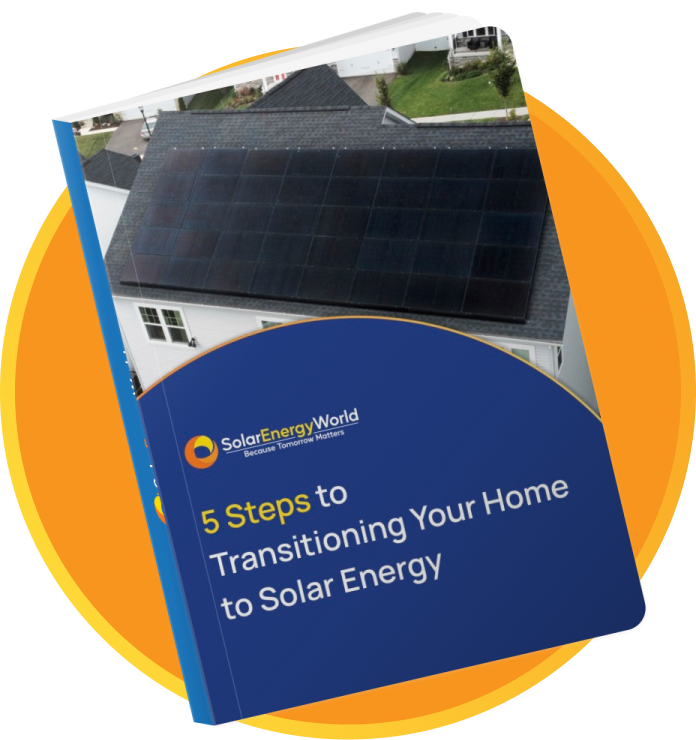Article
Top Questions Homeowners Ask Before Going Solar

The popularity of residential solar has grown exponentially in recent years, with a staggering annual growth rate of 26%. In fact, the US has a solar capacity of over 219 gigawatts, which could power around 37 million households. If so many people are embracing renewable energy, there must be compelling financial and environmental benefits, right? Right! However, installing solar panels is a big decision that requires careful consideration of various factors. That’s why we’re answering the top questions homeowners ask before going solar.
Join us to learn more about the average cost of solar panels, the benefits of solar energy for homeowners, and the main things to consider before installing solar panels at home.
How Does Solar Energy Work in Homes?
Most Americans receive electricity from the US power grid, which is sourced from fossil fuels, nuclear energy, and a small amount of renewable energy sources. This electricity is typically generated at power plants and delivered through miles of high- and low-voltage wires to reach homes and businesses nationwide.
Solar energy is a great alternative or supplementary source of power that can minimize your reliance on the grid. So, how does solar energy work in homes?
Solar panels are made of specialized semiconductor materials that absorb UV radiation and dislodge electrons within the solar cells, creating a flow of direct-current (DC) energy. A built-in inverter then converts this DC energy into alternating-current (AC) electricity, which powers the devices and appliances in your home.
Some residential solar arrays incorporate batteries to store surplus electricity until you’re ready to use it. Others are tied to the grid via net metering programs that allow you to sell excess electricity back to your utility company for credits to offset the price of future energy use.
How to Choose Solar Panels
Before going solar, many homeowners ask questions about the best panels for their homes. The right solar panel array for your needs will depend on your average energy consumption, solar potential, and the specifications of your rooftop or property. Here’s a quick guide to the three common types of solar panels on the market:
Monocrystalline
If you want the most efficient, powerful solar panels – and don’t mind paying a premium – monocrystalline models might be right for you. Made of uniform silicon wafers, these panels have the highest efficiency ratings of all commercial solar panels at 15% to 20%. Many mono-panels have warranties for 25 to 30 years, but it’s possible to get as much as 40 years out of your array.
Polycrystalline
Polycrystalline solar panels are a step down from monocrystalline varieties. They have efficiency ratings between 13% and 16% and can last 20 to 35 years. However, they’re also more affordable than their pricier counterparts.
Thin-Film
Thin-film solar panels are economical options often used on recreational vehicles and boats that don’t require large amounts of electricity. They’re lightweight, portable, and affordable, but they won’t generate enough energy to power the average household. With proper care and maintenance, these models can last 10 to 20 years.
Cost of Installing Solar Panels
Many homeowners ask similar questions before going solar, such as, “What are the costs of installing solar panels on my rooftop?” and “What kind of financing options are available for solar panels?”
Since every home and situation is different, it’s hard to offer a solid figure without first assessing your property and discussing your energy needs. However, the average solar panel array costs around $15,000. Most solar installation companies offer various financing options, including the opportunity to buy or lease your installation. You may even be eligible for a Power Purchase Agreement, in which you only pay for the energy generated by your solar panels!
How Do I Choose the Right Solar Installer?
A reputable solar installation expert can be your greatest ally as you embrace renewable energy. They’re used to answering all the questions homeowners ask before solar installation, and they can help you make informed decisions about your future solar panel array.
To safeguard your investment and choose the right solar provider, make sure you partner with a company that’s licensed and insured. Be sure to ask about their credentials and experience, and consider looking online for reviews.

How to Switch to Solar in 5 Simple Steps
What Are the Financial Benefits of Going Solar?
There’s a lot to love about solar energy, and some of the most common questions homeowners ask before going solar concern the financial incentives of renewable energy. Here are some of the benefits of solar energy for homeowners:
Long-Term Energy Savings
The real perks of solar energy tend to reveal themselves over time. Most solar panel arrays pay for themselves through utility savings and other financial incentives within 6 to 10 years. Considering that these systems can drastically reduce your energy bills for 30 years or more, it’s easy to see the allure.
Lower Electrical Bills
A solar panel array can save you between 20% and 100% of your monthly electrical costs by generating renewable energy from the sunlight your home already receives. If your utility provider offers a net metering program, you can also sell your surplus power back to the grid in exchange for credits on future energy costs.
Financial Incentives
Depending on your location, you may be able to enjoy tax credits, rebates, and other financial incentives through federal, state, and local legislation. For example, the Federal Investment Tax Credit will reimburse homeowners up to 30% of the cost of their eligible renewable energy system. Many states set goals for clean electricity generation in the form of Renewable Energy Portfolios and encourage the adoption of solar arrays through rebates and tax credits.
How Long Will It Take to See a Return on Investment?
Your solar array should pay for itself within about 10 years. Many factors will impact the time it takes to recoup the return on your investment, including your system’s efficiency and your local electricity rates. Monitoring your panels’ performance can help you identify potential issues that can cause reduced energy production rates.
What Are the Maintenance Requirements for Solar Panels?
Solar arrays typically require minimal maintenance, like routine cleaning and inspections. Seasonal considerations may be necessary for optimal performance. For instance, you may need to remove snow or pollen to ensure your panels are producing as much energy as possible. Again, the ability to monitor your solar array’s performance will help you identify and mitigate any potential problems that arise, and your solar installation company may alert you of any abnormalities in your system through off-site monitoring.
Will Solar Panels Increase the Value of My Home?
Numerous studies have shown that solar installations can increase property values by as much as 6.8%. Renewable energy systems are highly attractive to buyers seeking lower utility bills, greater long-term savings, and improved sustainability.
What Happens If I Sell My Home After Installing Solar Panels?
Many homeowners ask questions about how going solar can complicate future property sales. If you purchased your array and it’s been paid off, then it will usually be included in the sale of the property. However, leased solar panels can present some additional considerations, such as the transfer of the existing lease agreement and any applicable warranties.
The buyer will have several options for how to proceed. They may opt to assume the payments, buy out the system, or remove the solar installation entirely.
Are Solar Panels Worth the Investment in My Area?
This is one of the most common questions homeowners ask before going solar, and the answer can be complicated. Your geographic location and property’s unique microclimate can impact your ability to generate energy with solar panels. If you live in an area that experiences significant cloud cover and rain, your solar array may provide the financial and environmental benefits you could expect in a sunnier region.
Additionally, local policies and solar incentives may also affect solar viability. Let’s compare the financial benefits of installing similar residential solar arrays in two different states.
A homeowner in Maryland who installs a properly sized solar array can be eligible for the following financial perks:
- Federal Investment Tax Credit
- Maryland Property Tax Exemption for a Solar Energy System
- Maryland Sales and Use Tax Exemption for Residential Solar Electricity Sales
- Maryland Residential Clean Energy Grant Program
- Solar Renewable Energy Certificates & Net Metering
- Property-Assessed Clean Energy (PACE) Financing
On the other hand, a North Dakota resident installing a similar system may only be eligible for the Federal Investment Tax Credit and PACE financing.
Is Solar Energy Right for You?
Before going solar, it’s important for homeowners to ask questions about up-front costs, long-term financial benefits, and how photovoltaic panels may impact property value. Understanding your purchase agreement, stipulations in your home’s existing insurance or warranty, and how your solar array may affect future home sales will help you make an informed decision. The experts at Solar Energy World are happy to help you assess your home’s solar potential, determine the right size array for your property, and navigate the application process for rebates, tax credits, and other financial incentives. Get your free solar estimate today to begin the journey to a more sustainable future!
Want a Free Solar Estimate?
Fill out the form to get started today.

